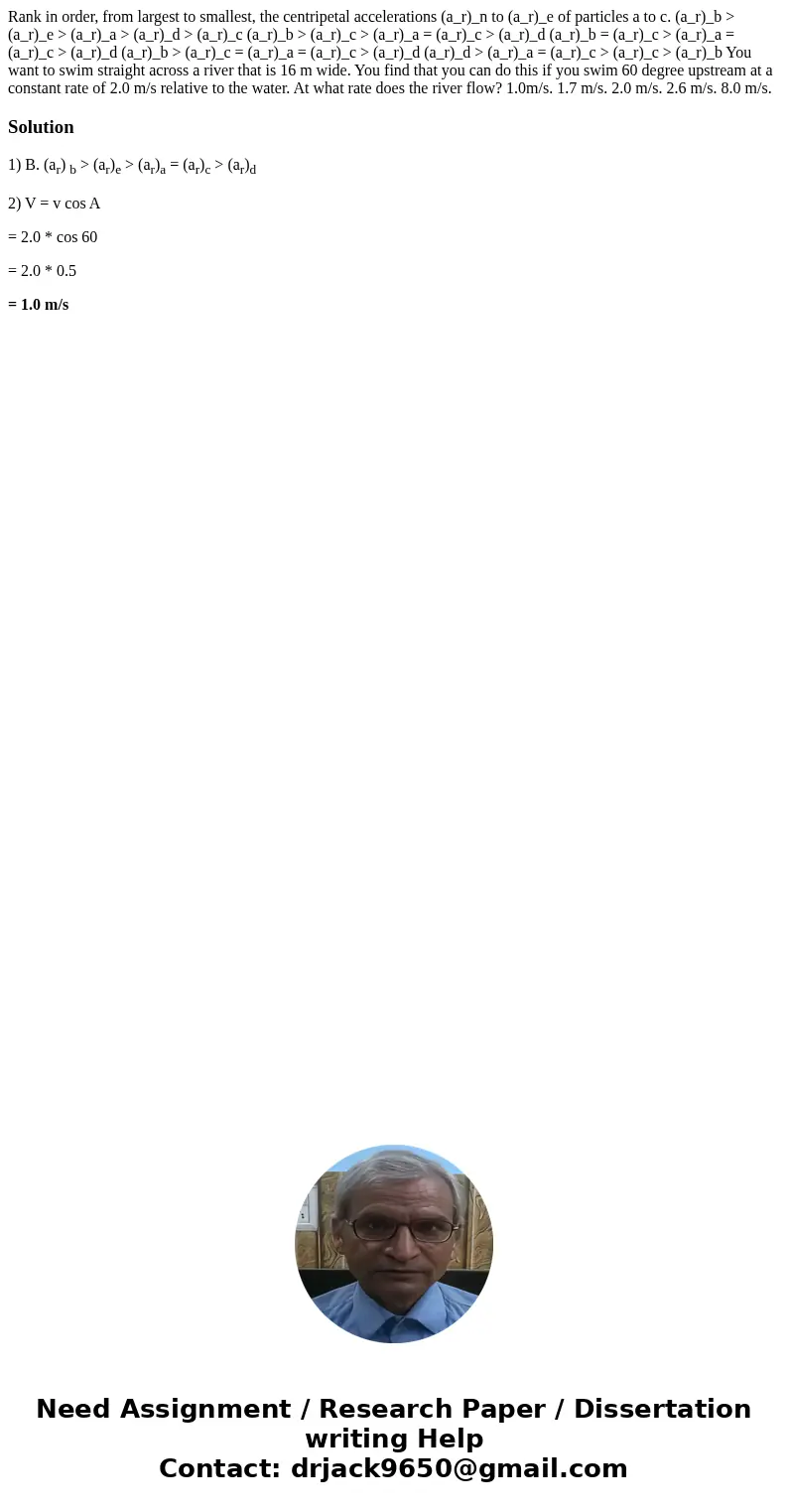Rank in order from largest to smallest the centripetal accel
Rank in order, from largest to smallest, the centripetal accelerations (a_r)_n to (a_r)_e of particles a to c. (a_r)_b > (a_r)_e > (a_r)_a > (a_r)_d > (a_r)_c (a_r)_b > (a_r)_c > (a_r)_a = (a_r)_c > (a_r)_d (a_r)_b = (a_r)_c > (a_r)_a = (a_r)_c > (a_r)_d (a_r)_b > (a_r)_c = (a_r)_a = (a_r)_c > (a_r)_d (a_r)_d > (a_r)_a = (a_r)_c > (a_r)_c > (a_r)_b You want to swim straight across a river that is 16 m wide. You find that you can do this if you swim 60 degree upstream at a constant rate of 2.0 m/s relative to the water. At what rate does the river flow? 1.0m/s. 1.7 m/s. 2.0 m/s. 2.6 m/s. 8.0 m/s.
Solution
1) B. (ar) b > (ar)e > (ar)a = (ar)c > (ar)d
2) V = v cos A
= 2.0 * cos 60
= 2.0 * 0.5
= 1.0 m/s

 Homework Sourse
Homework Sourse